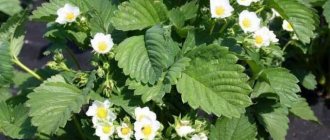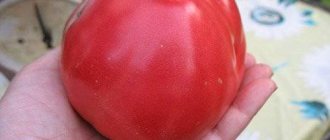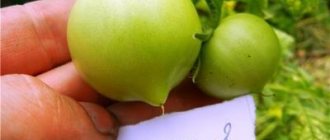History of the variety's creation
As already mentioned, the authors and originators of this strawberry variety are breeders from Italian agriculture. Specialists from this company have produced dozens of strawberry varieties that are widely known to gardeners from around the world.
Are you choosing which berries to plant on your plot?
Pay attention to the varieties of remontant strawberries for the Urals - tasty and productive.
Clery strawberries are also popular; they are grown in many European countries, including Russia. However, in our country, although this variety has been grown in most regions for many years, it has not yet been included in the State Register.
Photo of Clery strawberry
Brief history of the variety
The cultivation of strawberries in the garden began only about three hundred years ago. In the Middle Ages, it was considered a symbol of a certain delight, and healers used the berries to treat sore throats and kidneys.
In Europe, garden strawberries were planted in parks and gardens, growing them as a wild and ornamental plant, and only at the turn of the 14th and 15th centuries did they receive cultivated status. However, the berry was not popular. It was sweet and aromatic, but very small.
Almost two hundred years later, the same type of strawberry appeared, which is grown on plots. These are garden strawberries (or pineapple). It does not grow in the wild, but it was not bred either. The culture appeared on its own when two different species accidentally cross-pollinated: Chilean and Virginia.
Clery is a very young variety of garden strawberry, specially bred in Italy in 1998.
Main characteristics and description of the Clery strawberry variety
Strawberry Clery is one of the best early non-repairing varieties.
Its bushes are strong and powerful and can be spreading or compact.
The large foliage has tall stems, the leaves themselves are slightly wrinkled, with a characteristic gloss of dark emerald color. Tendrils are formed in large numbers, they are located close to the soil, they take root well, so there are no problems with the propagation of the variety. However, excess whiskers must be removed regularly, as they take away nutrition and interfere with the active ripening of the berries.
Important!
Clery strawberry seedlings have a fairly high price compared to other varieties of this berry crop.
CLERY - strawberry, variety description (Italian variety) - video
Peduncles are powerful and strong, reaching the height of the foliage. They are strong enough to withstand a ripening harvest, but they rarely fall on the ground along with ripe berries.
The flowers are medium in size, the petals are pure white, the core is bright yellow. Ovaries are formed in large numbers.
The shape of ripening strawberries is conical with rounded tips. The fruits are medium in size, approximately the same size, smooth, with a characteristic shine and pleasant taste, the weight of Clery strawberries is about 40 g, but with good care you can harvest fruits weighing up to 50 g
.
The color of ripe berries is bright red, at the stage of technical ripeness it is dark cherry. Ripe strawberries are sweet, the sourness is practically not felt, the aroma is typically strawberry. Ripe fruits are compacted and have no voids inside.
Excellent varieties of strawberries!
Strawberry Marvelous Strawberry Sensation Strawberry Elvira
Important!
The Clery strawberry variety has an undeniable advantage - in the right conditions, this plant is able to bear fruit throughout the year. Therefore, some gardeners even grow it on the windowsills in their apartments.
Ripe strawberries can be eaten fresh, added to desserts, made into preserves and jams, or placed in the freezer to freeze for the winter.
The Clery variety is highly frost-resistant and can easily withstand short periods of drought, while the taste of the fruit is practically not affected.
The harvested crop tolerates transportation well at any distance and can be stored in appropriate conditions for up to 5 days.
During transportation it does not wrinkle, does not lose its shape, and does not leak juice.
Clery Strawberry Yield
Flowering of the Clery strawberry variety begins in the first ten days of May, and even slight frosts are not harmful to the blooming buds and do not affect further yields.
The fruits begin to be collected from the last ten days of May. Fruiting is not too extended and lasts for 10-12 days.
However, the yield of the Clery variety is considered not too high - no more than 0.3 kg of ripe produce is harvested from each bush, which does not suit all gardeners.
Landing Features
Planting and caring for Clery strawberries is not particularly difficult or demanding, which has made it widely popular among gardeners. When planting a plant, it is very important to choose and prepare high-quality, healthy seedlings.
Strawberry planting dates
The variety is planted both in early spring and autumn. You can start planting Clery strawberry seedlings immediately after the snow cover melts - already in mid-to-late March. Bushes can also be planted in the fall - from the end of August to the first days of October.
Choosing the best place
Clery is a variety that “prefers” light, well-loosened soils with high levels of moisture. The culture is not suitable for very high areas with dense, clayey soil.
Preparation of planting material
In order for Clery strawberries to take root well and quickly take root in their permanent place of growth, the seedlings must be properly prepared.
To do this, it is hardened:
- place the bushes for 2-3 days in a cool room;
- make sure that the temperature in it does not rise to +10°C;
- For additional protection, soak the plant's roots in the clay mixture.
Thanks to hardening, strawberries adapt faster after planting in open soil and will be more resistant to negative environmental factors.
Transplanting
Clery strawberries are best planted in cloudy weather, early in the morning or late evening:
- The crop is planted in moist soil, so water the soil well before planting.
- Make a distance of at least 38-45 cm between the beds and between the bushes, as they will be strong and spreading.
- Place the top growth point of the plant above the soil surface, carefully straighten the roots and sprinkle soil on top.
After this, lightly compact the soil and water generously. In the case of spring planting, the plants can be additionally covered with plastic film to protect them from possible frosts.
Diseases and pests of strawberries
Clery strawberries are highly resistant to most diseases of the root system, as well as mold.
But it should be noted that the strawberry plantation of this variety must be protected from diseases, since if one plant is affected, the disease quickly spreads to all the bushes.
So experts recommend following the rules for caring for these strawberries, monitoring soil and air moisture, and carrying out preventive treatments of bushes with fungicides and insecticides to prevent the appearance of diseases and attacks by pests that carry the infection.
Useful article:
Strawberry diseases
Advantages and disadvantages of the variety
The main advantages of Clery strawberries include:
- due to the sufficient density of the berries, they can be transported over any distance, while ripe strawberries do not lose their presentation and taste;
- The harvested crop is stored in the refrigerator for at least 4-5 days;
- The purpose of ripe berries is universal; they are used in cooking and canning, and can also be frozen;
- since the berries have a minimal acid content, this strawberry can be eaten even by people with problems of the gastrointestinal tract and with increased acidity of the stomach and duodenum;
- the fruit contains a large amount of vitamins and minerals, so its nutritional value is higher than that of many other varieties of strawberries;
- the plant is unpretentious, can grow on almost any type of soil, does not require special care;
- Clery strawberries are highly resistant to frost and short periods of drought;
- this variety is highly resistant to diseases of the root system and various types of mold.
But this berry crop also has a number of disadvantages that you need to be aware of:
- the yield of this variety in the first two seasons is low; the highest harvest of Clery strawberries can be harvested in the 3rd season;
- but in general, the yields of this variety are low - no more than 0.3 kg of ripe fruits can be collected from a bush;
- the plantation must be changed every 4 seasons;
- if one bush of this strawberry becomes infected, the disease quickly spreads to the entire plantation;
- planting material is quite expensive.
Planting Clery strawberries
Typically, planting material of this variety is purchased in specialized stores or nurseries. From there, the seedlings are delivered with a closed root system; such rosettes quickly take root in a new location.
When propagating Clery strawberries with tendrils, the rosettes are not separated from the mother bushes until they are completely rooted.
The usual time for planting rosettes is the first ten days of August
. In this case, young plants have time to acclimatize in a new place, grow stronger before the onset of cold weather, and survive even a harsh winter well.
Strawberry planting scheme - video
On a note!
In spring, you can also plant this variety of strawberries. The time to plant Clery garden strawberries in the spring is immediately after the snow melts.
The beds for planting strawberries are prepared in advance in sunny areas protected from gusts of wind. Although this variety grows on any type of soil, it must still be quite loose and fertile, with slightly acidic or neutral soil acidity.
Clery strawberries should not be planted in lowlands or in areas with close groundwater, as this berry crop does not tolerate highly moist soils.
Photos of Clery strawberry seedlings
River sand, rotted sawdust and humus or compost are added to heavy soils. If the soil is highly acidified, then lime or dolomite flour must be added to it in advance.
When preparing beds, at least 6 kg of rotted mullein or compost must be added to each square of area. When digging holes, add 30 g of superphosphate and potassium salt to each hole.
Important!
Potassium salt should not contain chlorine, since strawberries do not tolerate this trace element.
Usually rosettes are planted in two rows on the beds, the distance between the bushes in the rows is 0.3 m, the row spacing should be about 0.5 m wide
. When planting Clery strawberries, the growing point should not be buried in the soil - it should be slightly above ground level.
After the plants are planted in the spring, they are covered with film to protect them from possible spring return frosts.
Landing
The preferred time for planting Clery is late spring or warm autumn. Be sure to treat the seedlings with a disinfectant before planting: dilute a pink solution of potassium permanganate or add peroxide to the water (4-5 tablespoons per 1 liter). Place the place for the berries on a plain; it is advisable to choose slightly acidic soil with a pH of 6.5 units. Place no more than 4 plants per planting meter. The minimum distance between neighboring plants should not be less than 35-40 cm. You can use a checkerboard planting pattern, so it will be convenient to care for the plants.
When planting, add a little ash to the holes, literally a couple of tablespoons. Do not bury the root collar of the plant into the ground, otherwise the bush will take a long time to take root.
Attention! The optimal time for planting strawberries is mid-April.
After planting, water the berries with warm water. To make the plants take root faster, cover them with black waterproof material, it will keep the heat inside.
Further care for Clery strawberries
This variety does not require special care - Clery strawberries need regular watering, loosening of the root areas, and timely removal of weeds.
On a strawberry plantation, it is better to equip a drip irrigation system; in this case, those gardeners who do not have a lot of time to work on caring for strawberries will not have to waste time on watering.
Even despite the high immunity of this strawberry to diseases, the bushes should be inspected for infections. If symptoms of disease appear, it is necessary to immediately begin to combat them.
You should also regularly trim off excess tendrils of Clery strawberries, which absorb a large amount of nutrients, which can cause the fruits to become smaller.
Using a sharp garden tool, old dried leaves are trimmed, as well as foliage that shows signs of disease. All cut foliage and tendrils are immediately removed from the area and burned.
The pruning procedure is carried out after harvesting, but 1-1.5 months before the onset of cold weather, so that young foliage appears on the bushes.
Fertilizing strawberry plants
The main thing that the Clery strawberry variety is demanding of is the timely application of fertilizers.
Important!
Organic fertilizing should be applied only in the spring.
In early spring, complex mineral fertilizers with a large range of macro and microelements should be applied to the bushes of this strawberry.
During the period when buds appear, liquid fertilizer should be applied, which is prepared as follows:
dissolve 2 tbsp in a bucket of water.
l. nitrophoska and 5 g of potassium sulfate. Under each bush add 500 ml of this nutrient solution. During flowering, each strawberry plant is fertilized with liquid manure diluted in a ratio of 1:8.
In the last ten days of August, you should also use liquid fertilizer, which is prepared as follows:
dissolve 2 tbsp in a bucket of water. l. complex mineral fertilizer for strawberries and 150 g of wood ash.
Preparing for winter
When preparing this strawberry plantation for winter, gardeners cut off all foliage, shoots and tendrils. The root zone must be carefully loosened so that air can reach the roots.
Useful article:
Preparing strawberries for winter
When growing strawberries in the garden, they must be covered before the onset of cold weather. To do this, the soil around the bushes is covered with a layer of mulch 10-12 cm thick, then covered with pine needles, straw or hay.
In regions with harsh winters, strawberries need more careful shelter. In addition to covering with organic materials, metal5 arcs are installed over the beds, onto which non-woven agrofibre is stretched.
Important!
With the onset of spring, the shelter is removed, including the layer of mulch in which pests or pathogenic microorganisms could overwinter.
Strawberry Clery: reviews from those who grew the variety
Olga, 32 years old, Nizhny Novgorod: Many gardeners plant only strawberry varieties with the highest yield on their plots, undeservedly not paying attention to Clery strawberries. But this variety is distinguished by its early ripening period, its flowers are not damaged by spring cold snaps, the bushes do not require special care, and the berries have a beautiful appearance and good taste. I have been growing this strawberry for more than 7 years. True, in the first season after planting there is no special harvest from these strawberries, but over the next couple of years you can collect quite a large number of strawberries from the Clery strawberry beds.
Veronica, 55 years old, Samara region: For some reason, my neighbors in the garden don’t grow Clery strawberries, but I really like them. To get large yields from this early variety, I plant several beds. I grow it mainly for sale, and buyers snap up these strawberries very quickly. However, I would like to note that birds also like ripening fruits, so at the time of ripening it is necessary to protect the beds from these feathered pests.
Sasha, 35 years old, Moscow region: I planted Clery strawberries in the garden for testing on the advice of gardener friends. The first harvest was simply magnificent (although not very large) - the berries were large and fragrant. Although my kids said they were too sweet. But later the harvests were large enough, so I made aromatic jam for the winter.
Even despite the average yield, Clery strawberries were liked by many Russian gardeners.
They appreciated the early ripening of berries, the ease of care and the good taste of ripe fruits. Therefore, in many garden plots you can find this variety of strawberries.
Berry propagation techniques
Clery garden strawberries can be propagated by several methods. But according to the observations of experienced summer residents, the most relevant are dividing the bush and rooting rosettes.
Self-propagation of berries
As mentioned above, Clery develops a decent amount of mustache. During the selection process, it is necessary to pay close attention to the level of productivity of the shrub. It is worth remembering that strawberry seedlings take root completely in the soil. Therefore, you can use any wide plastic container for transplantation.
The rosettes should not be separated from the mother bush until a strong root structure is formed. The seedling can be transferred to its permanent location after at least 6-7 leaves are formed on it.
Reproduction by dividing the bush
This method is characterized by faster production of subsequent large harvests than with the previous propagation option. A three-year-old version with powerful rosettes can act as a mother bush. It is desirable that the bush is healthy and has not previously suffered from infectious diseases.
It is also important to pay attention to the fact that each material has such details as a rosette and root system.











